Skoda Superb Estate 2024 review: Dull? Get behind the wheel and you'll change your tune
But ignore the instrument cluster integration
There’s a danger when updating an existing product of “phoning it in”. Jeremy Clarkson famously savaged the 1995 Vauxhall Vectra on old Top Gear, claiming the Cavalier replacement was so dull he couldn’t fill six minutes of airtime about it. In a Sunday Times review of the Vectra’s successor, he wrote: “If they couldn’t be bothered to make the car interesting in any way whatsoever, I couldn’t be bothered to drive it.” And then went into detail about cuckoos and reedwarblers, because he viewed the 2002 Vectra as equally slumber-inducing.
Conversely, there’s the risk of radically overhauling something that might be uninteresting but clearly sells well. Binning every detail and production method in favour of a wild new direction is fraught with business peril.
Teetering across the metaphorical tightrope between these two states of being, then, comes the all-new, fourth-generation Skoda Superb Estate.
On the one hand, it must replace the outgoing Superb Estate, which isn’t the most exciting car in the world but was a well-received big wagon right up to the end of its service life, a few short months ago. And on the other, Skoda can’t simply farm out the same old merchandise and expect people to fawn over it. This, after all, is an age in which SUVs are de rigueur while large estate cars are dying out; a moment of quiet reflection, please, for the passing of the Ford Mondeo Estate, Mazda6 Tourer and Vauxhall Insignia Sports Tourer.
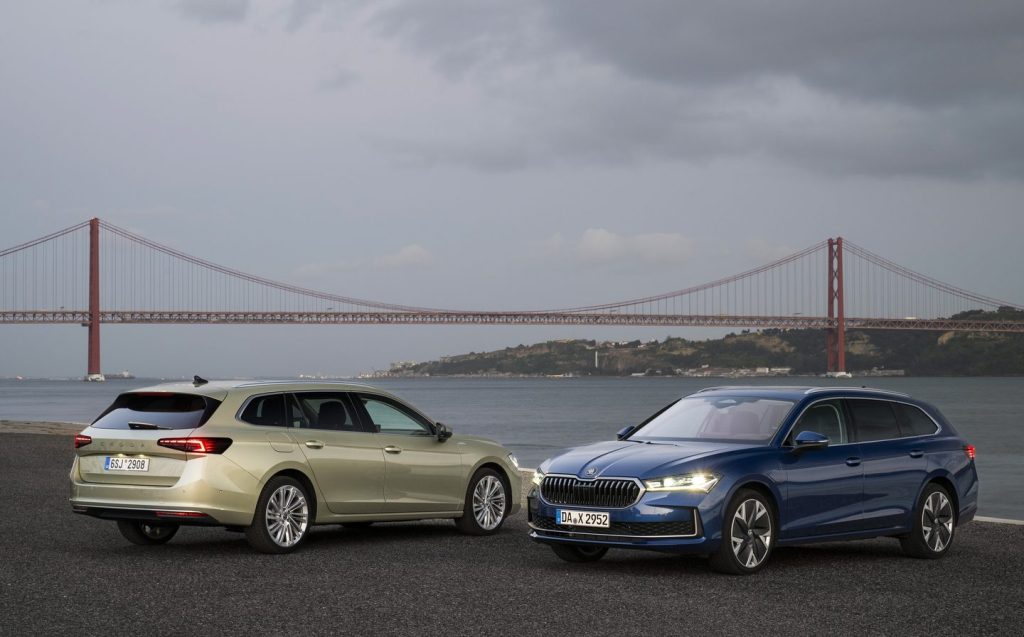
Yes, this really is the new one
In aesthetic terms, Skoda has gone with business as usual. In fact, afford the new Superb Estate only a casual glance and you’ll believe Skoda’s stylists simply didn’t bother to update the old one. There’s a strong whiff of familiarity breeding contempt here. Indeed, from the rear three-quarters, the Superb wagon looks eerily like that Insignia Sports Tourer.
But, if you look closer, you’ll notice that Skoda has tidied up the design to pleasing effect. A larger, octagonal radiator grille framed by Matrix LED headlights studded with “Crystallinium” design details — nope, us neither — is the key giveaway, while the body has grown in length (by 40mm) and height (5mm), without making the Superb less aerodynamically efficient; with a coefficient of drag of just 0.25, it’s as slippery through the air as the streamlined 1997 Honda Insight hybrid. Which is mindblowing.
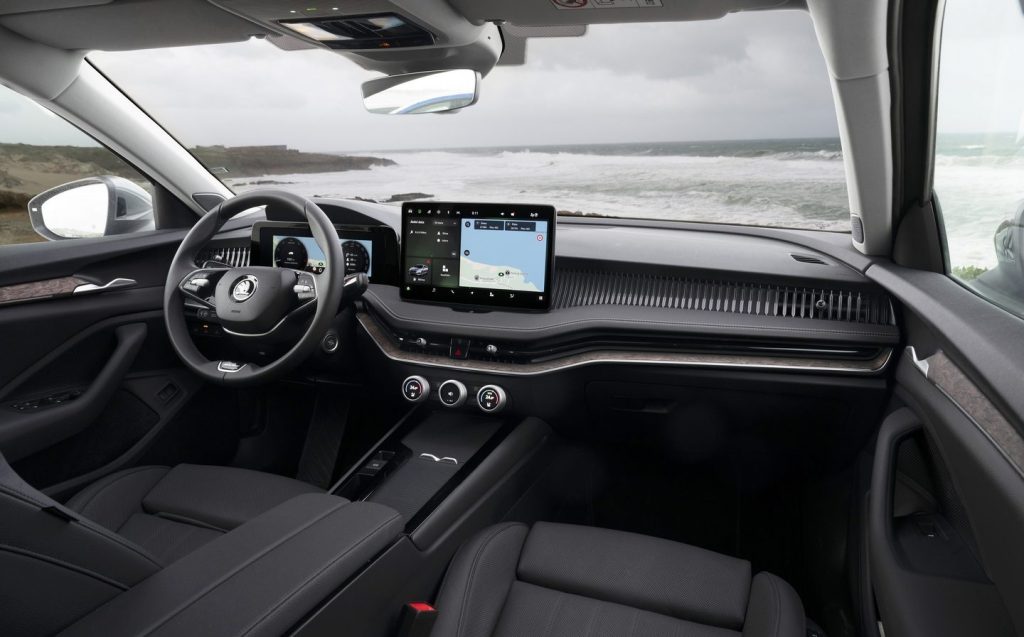
Step inside and you cannot fail to mark the changes. Skoda has gone to town with material quality, while also ramping up the digital real estate on the dashboard. There’s a 10.25in instrument cluster, alongside an enlarged 13in central infotainment screen.
Better still are the “Smart Dials” beneath this main display. Each of these houses its own 32mm circular digital screen — the outer two dials control the split-zone front climate functions, as well as heated and ventilated (if fitted) seats. The central one is a “command” unit, which allows you to scroll through four different key features of the car.
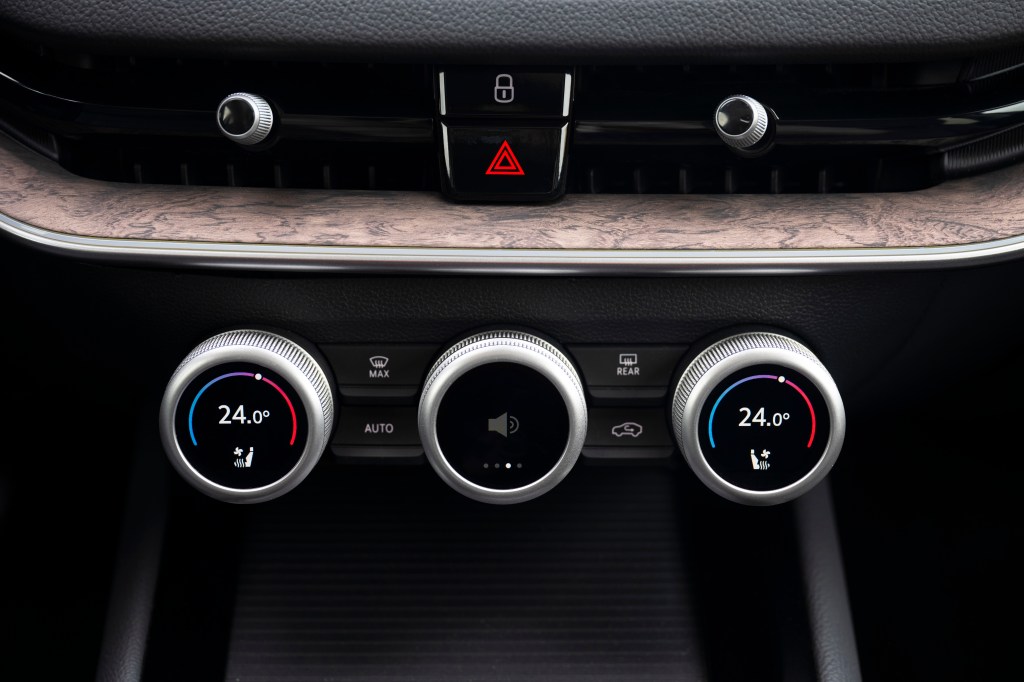
This is a brilliant way of keeping the Superb’s cabin feeling high-tech, without loading absolutely every major control in the car onto the main touchscreen — which the safety regulators are now planning to penalise. A cunning (and tactile) blend of physical switchgear with 21st-century tech.
Like so many of Skoda’s “Simply Clever” design details that aim to make life easier, the Smart Dials are a real winner. It’s a shame, then, that they wobble about a bit if you’re too heavy-handed with them, and that the plastic knurled dial surrounding them feels a bit cheap.
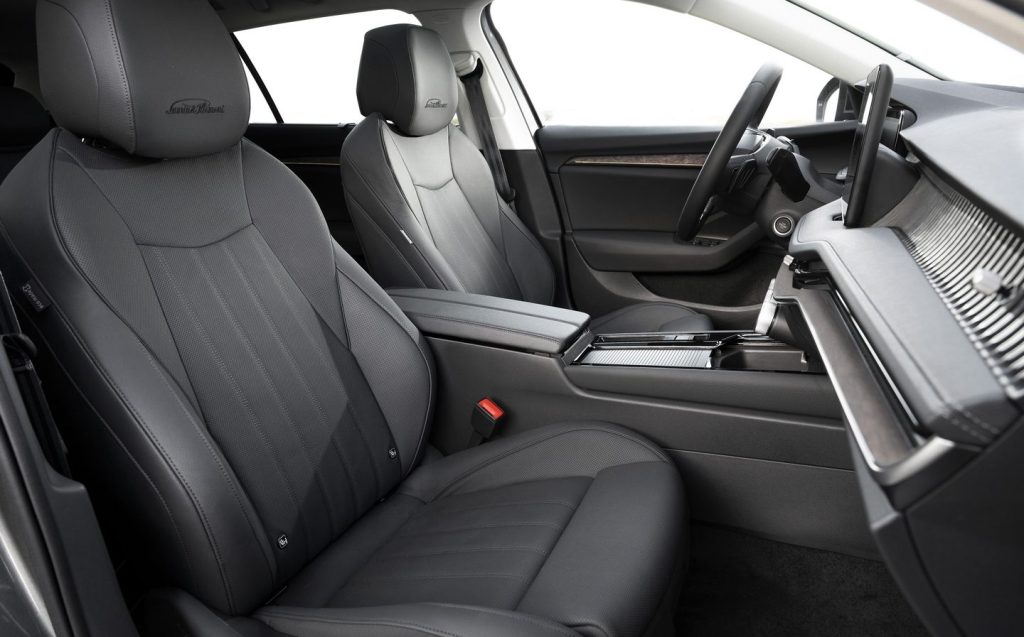
Space odyssey
There are a couple of other niggles. The first is that the digital instrument housing, rectangular in shape, sits beneath a semi-circular cowl. It is not the most natural-looking integration of the screen.
The other is that the central, slatted trim in the dashboard — which is a conceit to mask the outer air vents in the fascia — might remind you of the radiator grille on a Mercedes-AMG. Or, more worryingly, Hannibal Lecter’s face mask.
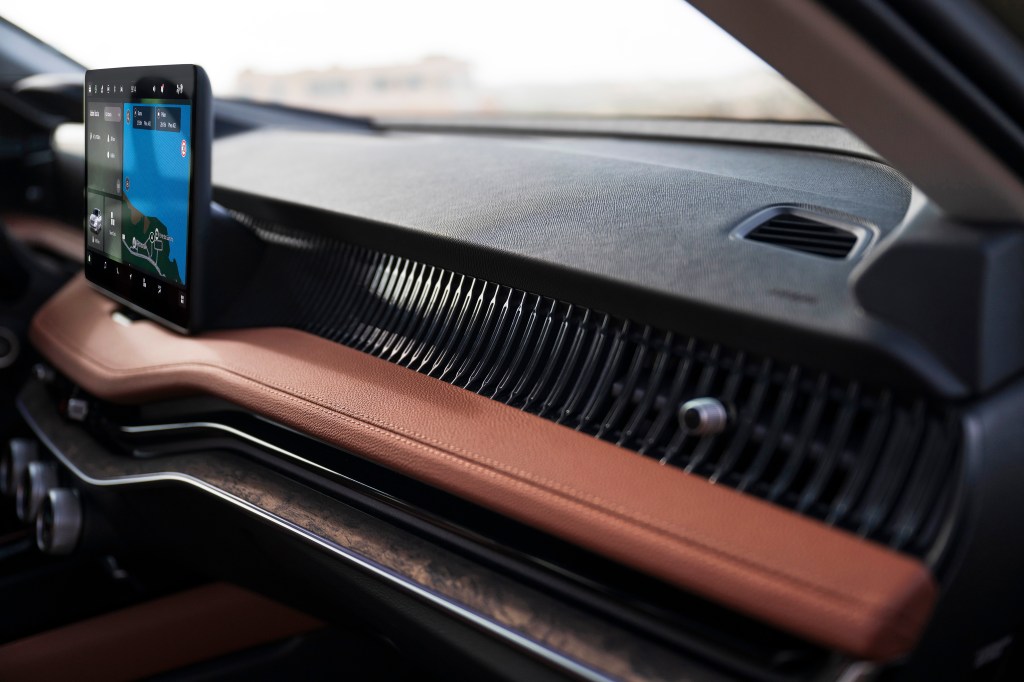
But our criticisms of the Superb Estate’s cabin end there. In terms of the looks, solidity and tactility, the Superb Estate has a beautifully-designed interior. And it’s vast. Absolutely, comprehensively vast.
It’s not as if the old car lacked for lounging space for passengers, but with an additional 8mm front, 7mm rear of headroom, plus the sort of legroom in the second row that almost looks as if a stilt-walker could get into the car without removing said stilts, the Superb’s passenger accommodation is enormous.
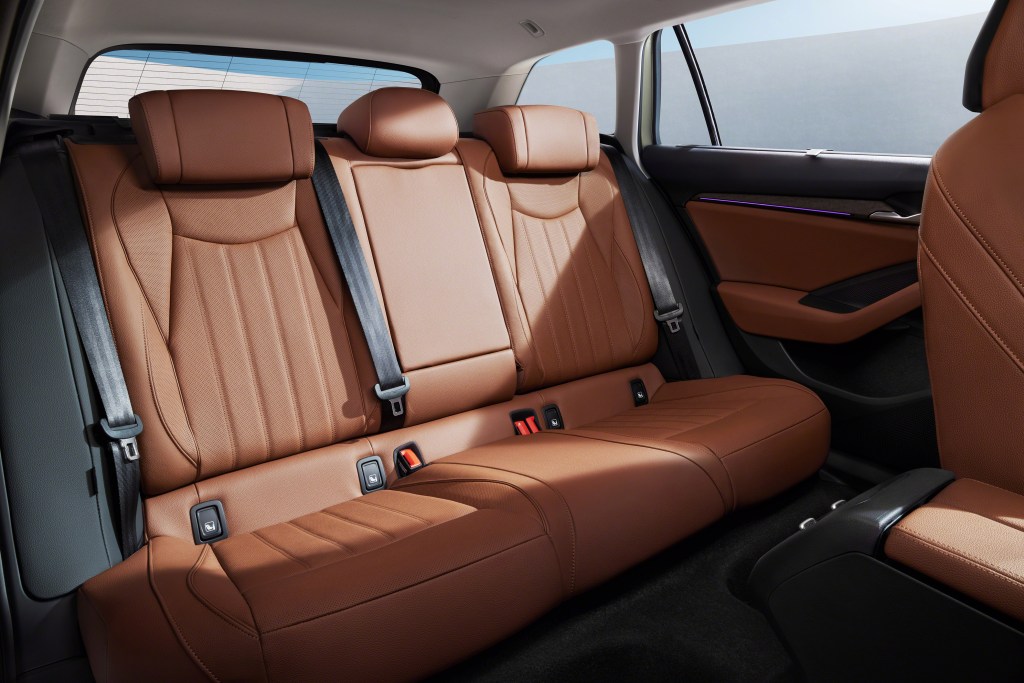
Yet not as big as the boot. At 660 litres, the old car wasn’t deprived in this department either, but the cavern behind the seating area has grown another 30 litres to 690 all-in. Fold the Superb Estate’s rear seats down and you get more than 1,900 litres of cargo capacity — positively van-like.
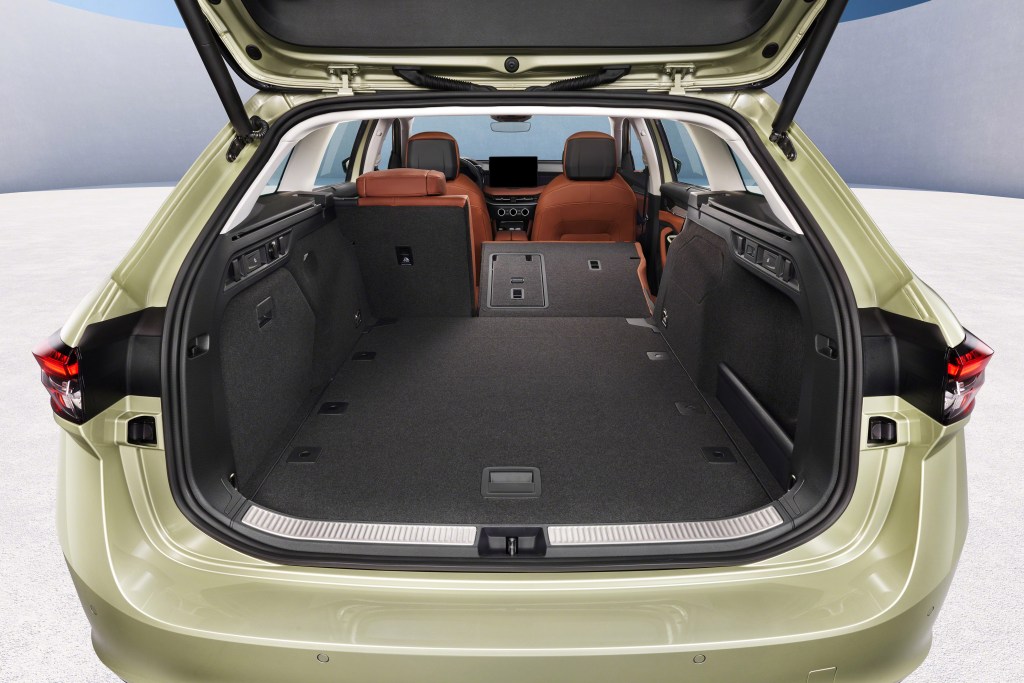
Skoda leads Volkswagen
Most telling about the launch and development of this car are two key points. The first is that Skoda has launched this Superb as an Estate first (known as the Superb Combi outside the UK), with the more traditional fastback following on soon after — normally, car companies would do this sort of thing the other way around.
The second, far more pertinent fact is that Skoda’s German overlord, Volkswagen, was clearly so impressed by what its Czech offshoot cooked up with the last Superb Estate that it handed over all development duties for the latest Passat Estate (pictured below) to Skoda.

So no longer can you go around saying the Superb Estate is just a rebadged Passat wagon — instead, the Volkswagen is a repurposed Skoda Superb. Admittedly, VW swung the hierarchical lead and launched the latest Passat Estate before this car arrived in an effort to reassert its authority, but the point is still valid.
Further clouding the waters and perhaps suggesting that on the face of it, Skoda hasn’t bothered much with the new car is that the new Superb Estate makes the most sense as a (whisper it) turbodiesel. Most unfashionable.
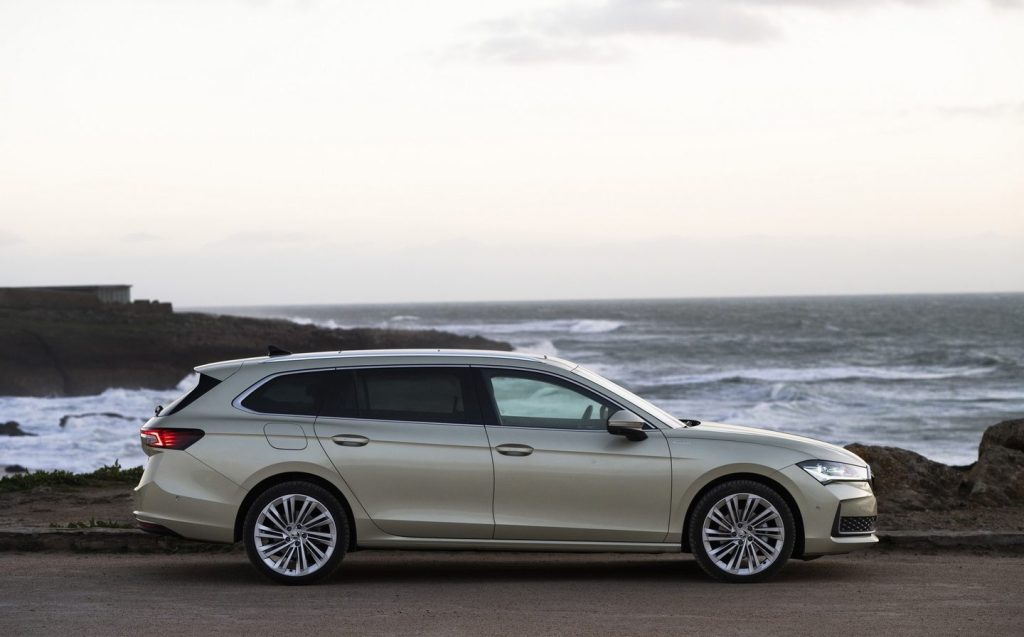
We tried the car in three different formats: the new, 148bhp 1.5-litre TSI petrol, with mild-hybrid (MHEV) technology; the 201bhp “iV” plug-in hybrid (PHEV) model, with more than 62 miles of all-electric range; and as the 148bhp 2-litre TDI as well.
We only got a short go at low speeds on urban roads in the PHEV, so we need more time in that to bring you our fuller thoughts. Suffice to say that it came across as an impressive integration of the petrol-electric running gear, and didn’t feel unnecessarily heavy and unwieldy, despite weighing 1.85 tonnes.
Diesel wins the day
The TSI petrol model was very likeable, with smooth power delivery and impressive refinement. But if you rev the small-capacity four-cylinder engine over 4,000rpm, it starts to sound quite strained and raucous. And with 184lb ft of torque, there’s always the feeling the petrol model is just a little shy of muscle in that mid range revband.
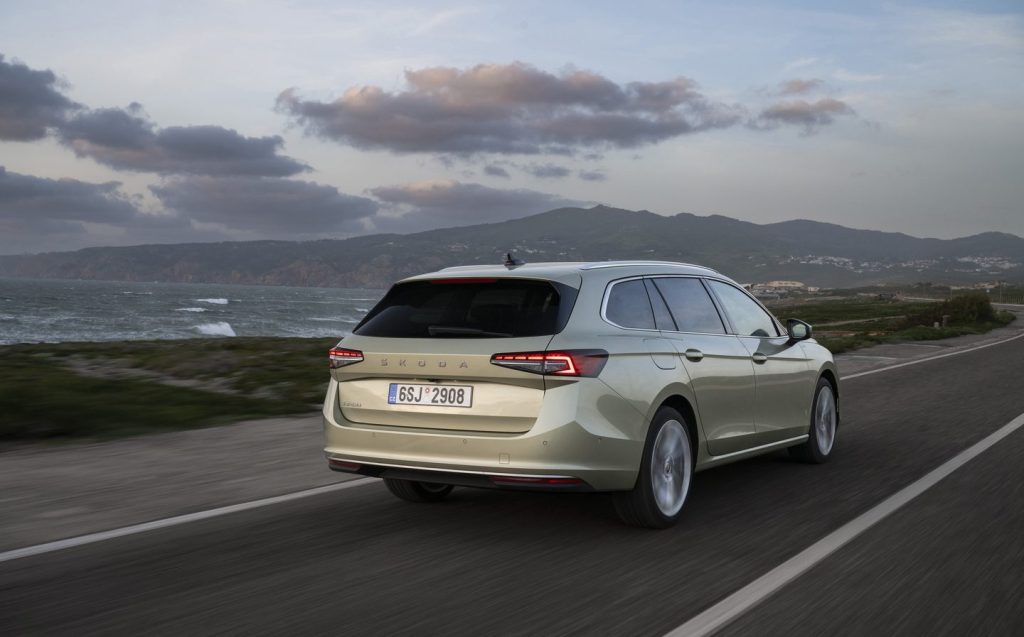
Which is why the 148bhp TDI is the perfect match for the Superb Estate. Driving the front wheels only through a seven-speed automatic transmission, it has no more power than the TSI petrol, but it does produce an additional 82lb ft of torque (twisting force). And this makes all the difference.
It allows the big estate to pull cleanly off the line and surge forward in city traffic. It’s also a quiet engine, barely audible at idle and hushed up to 4,000rpm. Even when you can hear it, the TDI emits more cultured noises than the TSI, somewhat surprisingly.
It’ll also have a better chance of getting near its official 55mpg fuel economy figure than the petrol model probably will at attaining near-50mpg, and because it’s the latest, cleanest diesel technology then you don’t need to feel unutterably guilty about driving it around with lots of invisible tailpipe nasties coming out of the back of it.
Heavenly suspension
So, what you have here looks like a vaguely anachronistic machine that’s out of touch with modern car-consumer tastes. A turbodiesel estate, in an era when everyone wants electric SUVs. Why, therefore, is the Skoda so highly rated in this review?
Because it is a thorough joy to drive. Full disclosure means we have to say all three test cars we sampled were on Dynamic Chassis Control (DCC) adaptive suspension, which will be a cost option on certain models of the Superb Estate. We don’t yet know what a car on standard dampers will feel like, although we’d be surprised if it turned out to be a dynamic mess.
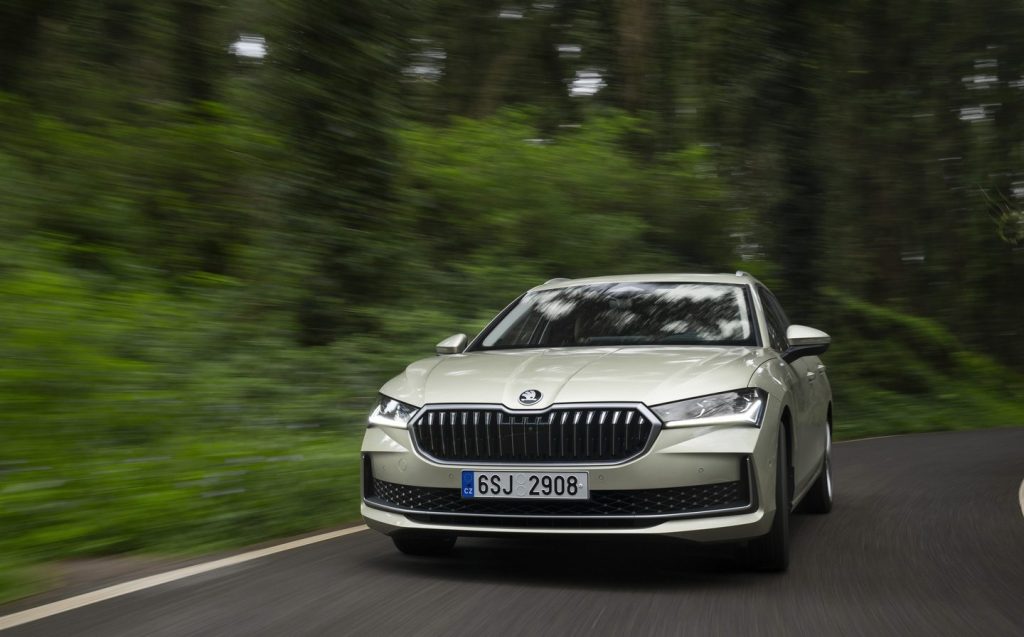
Yet the DCC gives the Superb an almost ethereal squidge and float to its damping that means the ride comfort is quite extraordinary. Rare is the time you can discern anything significant about the road surface, the Skoda’s suspension instead smothering large lumps and bumps away into nothingness before they can intrude on the passenger compartment and the comfort of those seated therein.
Aided by that silky-smooth and whisper-quiet diesel engine, and the aerodynamic body of the Superb Estate cutting through the air in an efficient manner, you can be travelling along at 70mph in the Skoda and the interior is cathedral quiet. About the loudest thing you’ll hear inside is maybe a discreet cough from someone sitting reverentially in the rear nave… sorry, we mean, rear seats.
Tightrope walked
It even handles better than the old car, if still being some way short of what you’d ever consider “sporting”. The Superb has good, accurate steering, impressive body control and plenty of grip. It’s not thrilling to drive in the corners, but it is quietly, confidently capable.
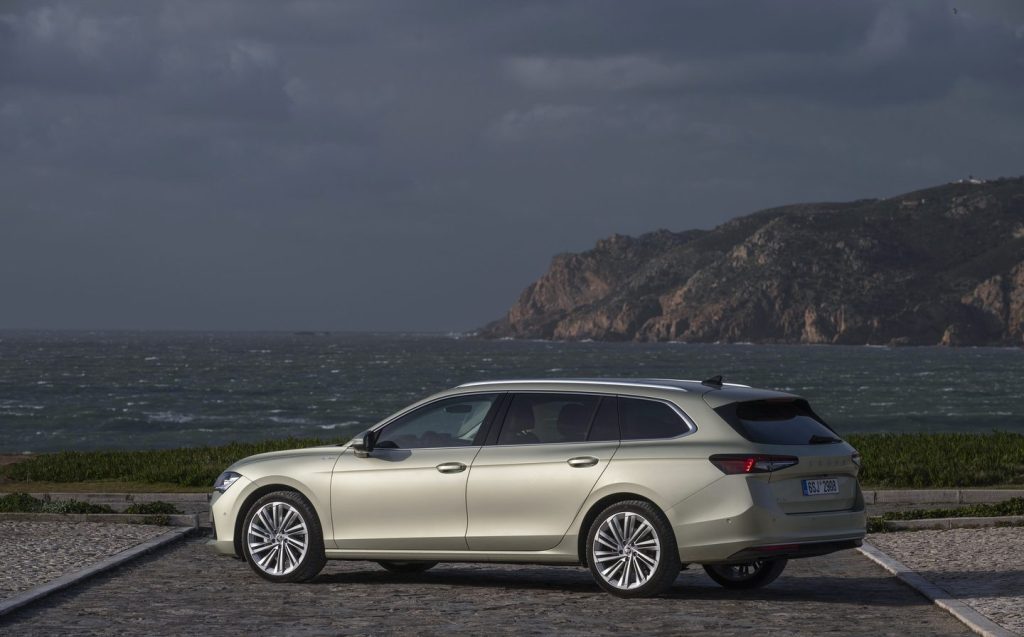
Yep, there’s nothing phoned-in about the Skoda Superb Estate this time around, either aesthetically or dynamically speaking. And yet neither has the Czech company ignored what made the previous car such a good one.
All Skoda has done here is taken all the slightly less brilliant bits of the previous Superb Estate, improved upon them, and served up a car which is little short of utterly supe… well, you get the idea.
Related articles
- If you were interested in our review of the new Skoda Superb Estate, you might want to read our review of a prototype version of the new Skoda Kodiaq
- Want to know what the best-selling cars in the UK are?
- Looking for something more compact? Read our extended test report on the Skoda Kamiq
Latest articles
- testing schedule 2
- test schedule
- F1 driver Lando Norris commissions bespoke open-top Land Rover Defender
- Citroën C3 and e-C3 2024 review: Petrol or electric, bow down before the new king of value cars
- Best-selling cars 2024: The UK’s most popular models
- Fourth-generation BMW 1 Series shows its new face with all-petrol line-up for the UK
- Cupra Tavascan 2024 review: Funky electric SUV continues Spanish brand’s EV roll
- Divine intervention? Trump-supporters’ motorhome destroyed after rolling into telegraph pole
- Extended test: 2023 Vauxhall Astra Sports Tourer GS PHEV

















